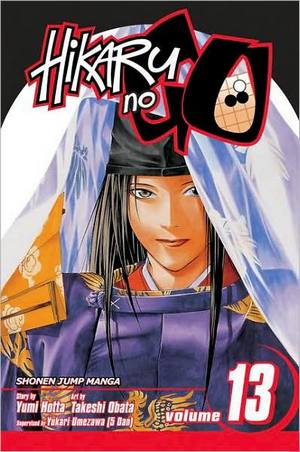- Comics
- Comics Reviews
- Manga
- Comics Reviews
- European Comics
- News
- Comics News
- Press Releases
- Columns
- Spotlight
- Digital Comics
- Webcomics
- Cult Favorite
- Back Issues
- Webcomics
- Movies
- Toys
- Store
- More
- About
By Leroy Douresseaux
October 6, 2008 - 18:57
 |
| The above cover image courtesy of barnesandnoble.com |
Rated “A” for “All Ages”
Teen Hikaru Shindo discovered a haunted “go” board with a spirit named Fujiwara-no-Sai attached to it. Sai was a master of “go,” a board game that originated in China, and he lived sometime during Japan’s Heian era (794 A.D. to 1185 A.D.). When Hikaru touched the board, Sai entered his consciousness. Sai, in turn, awakened Hikaru’s untapped genius for the game of go, and soon Hikaru is chasing his dream of being a professional go player.
In Hikaru No Go, Vol. 13, Sai finally gets his chance to face off against go master, Toya Meijin, the father of Hikaru’s rival, Akira Toya. Sai, however, must play through Hikaru, so the players will not play each other face-to-face, but rather on computers via the Internet. This game is also not without high stakes, as go professionals, players, and fans from around the world stare at computer screens to follow this incredible match.
THE LOWDOWN: As sports manga go (Ha!), Hikaru No Go is a great one. The art by Takeshi Obata, by the design of the pages, the composition of the art in each panel, and the high quality of the figure drawing, is pitch perfect for all the moods and styles this almost-real world concept requires. The story by Yumi Hotta is incredible. Not only has she made an incredibly engaging manga about a board game, she’s also done it with a huge cast of endearing characters, in which good guys/bad guys isn’t the issue; rather it’s about competitors and competition. It’s a narrative that is as hot as a Jason Bourne move – say, The Bourne Ultimatum.
POSSIBLE AUDIENCE: The “all ages” rating on Hikaru No Go doesn’t mean that this title is just for children. It just means older readers will also enjoy this page-turning delight.
A